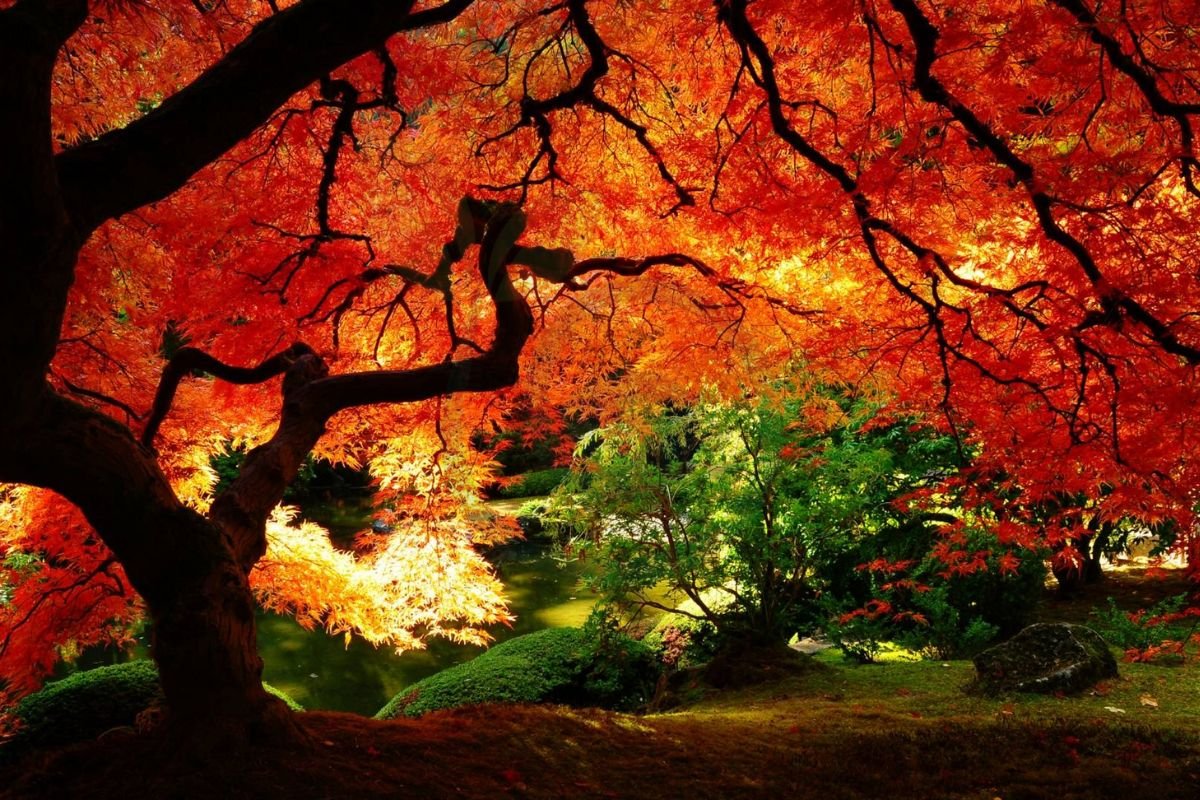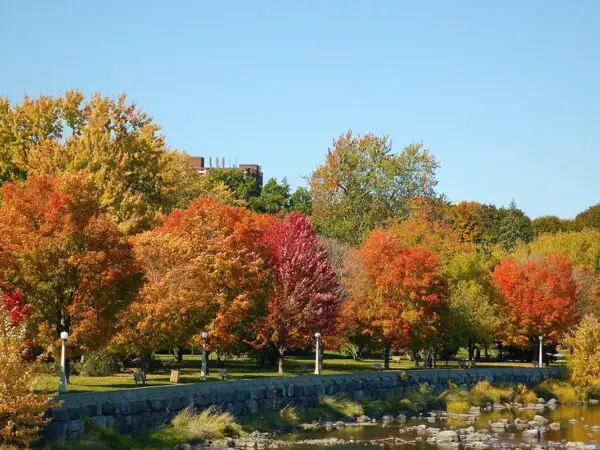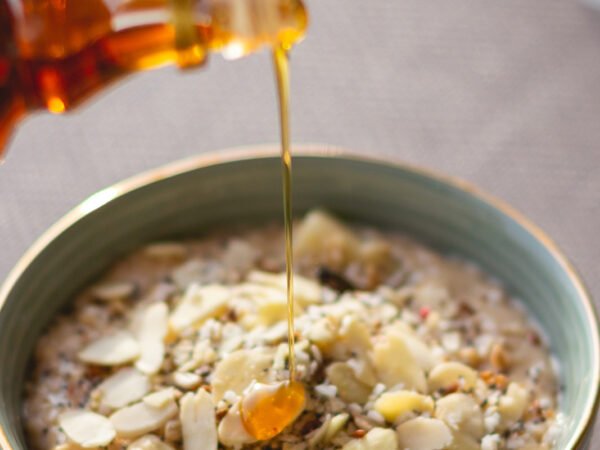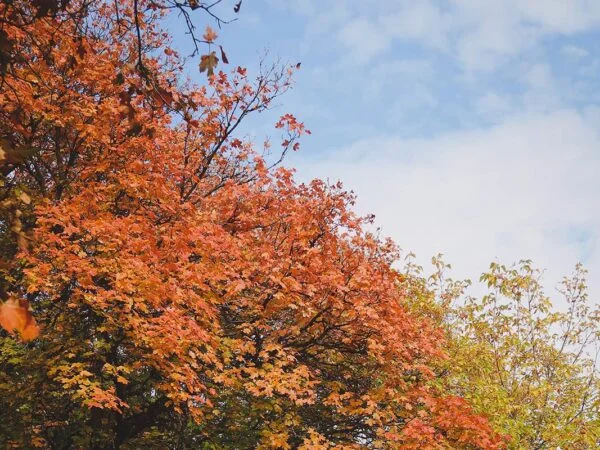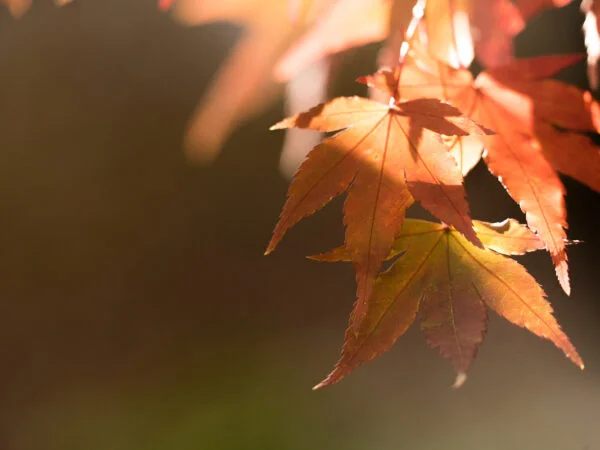Did you know that a single maple tree can have over 100,000 leaves? When autumn arrives, these vibrant deciduous trees' leaf color transforms into a breathtaking display of reds, oranges, and yellows. The mesmerizing beauty of maple trees during autumn is a sight to behold, attracting nature enthusiasts and photographers alike. Witnessing the striking transformation of maple trees and their autumn foliage as they prepare for winter is a magical experience that captivates all who behold it. Join us as we explore the wonder of maple trees' autumn foliage and delve into the science behind this stunning seasonal spectacle.
Key Takeaways
- Understand the science behind the vibrant colors of maple trees during fall by delving into pigment science.
- Appreciate how autumn colors serve a purpose beyond aesthetics, aiding in processes like photosynthesis and protection from environmental stressors.
- Recognize the impact of environmental factors such as temperature, sunlight, chlorophyll, and leaf on the intensity and duration of fall colors in maple trees.
- Explore how the stunning fall foliage of maple trees contributes to tourism, attracting visitors seeking picturesque views and seasonal experiences.
- Consider the ecological importance of maple trees beyond their colors, including their role in providing habitats and supporting biodiversity.
- Prioritize health and safety when enjoying fall foliage by being cautious of slippery leaves and practicing responsible tourism in natural areas.
Maple Colors Explained
Chlorophyll Basics
Chlorophyll, found in chloroplasts, gives maple leaves their green color during the growing season. As autumn approaches, chlorophyll decreases, allowing other pigments to surface. This decrease unveils vibrant hues like yellow, orange, and red in maple foliage.
Color Transition
Maple leaves and trees undergo a captivating transition from green to yellow, orange, and red in autumn. The diminishing chlorophyll reveals carotenoids, responsible for the warm tones, and anthocyanins that create the striking reds. This transition paints a picturesque landscape of vivid colors on maple trees.
Pigment Roles
Carotenoids
Carotenoids play a vital role in imparting the yellow, brown, and orange shades to maple leaves as they prepare for fall. These pigments are commonly found in various tree species, enhancing the visual appeal of autumn foliage. Their presence enriches the overall color palette displayed by maples.
Anthocyanins
Anthocyanins contribute significantly to the mesmerizing red and purple hues seen on maple leaves during autumn. These pigments serve dual purposes - acting as a photoprotective shield and influencing interactions with insects. Their unique role adds depth and intensity to the fall color display of maple trees.
Pigment Science
Carotenoids Impact
Carotenoids play a crucial role in enhancing the vibrant autumn colors of maple trees. These pigments, present in leaves throughout the year, become particularly prominent during the fall season. The presence of carotenoids is what contributes to the warm hues of yellow and orange seen in maple leaves during autumn. This pigment not only adds visual appeal but also provides protection against certain environmental stressors.
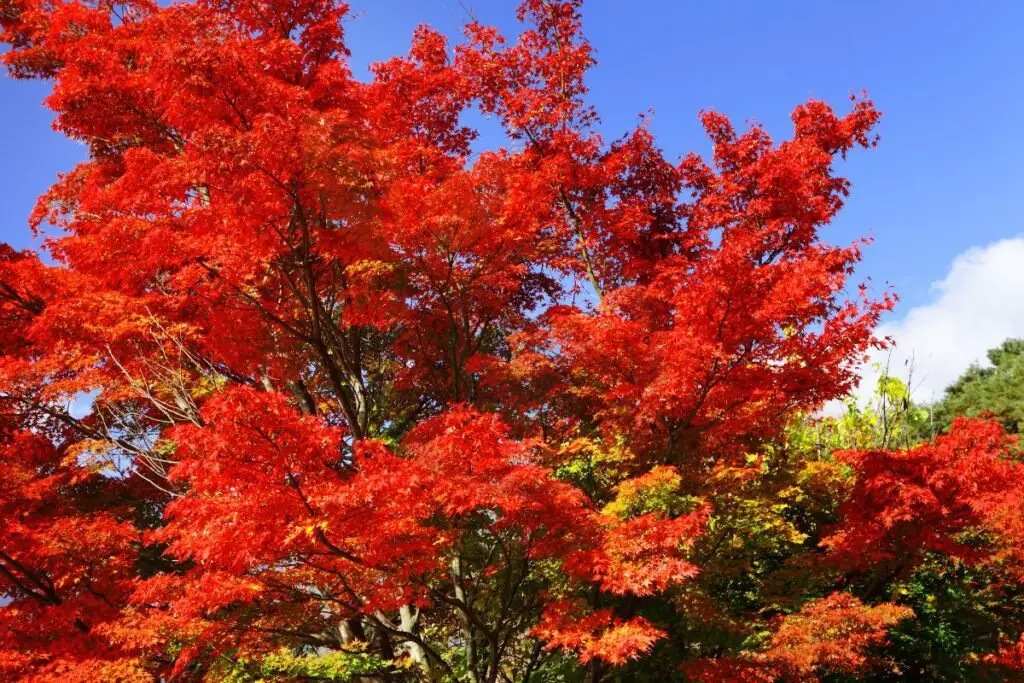
The impact of carotenoids goes beyond aesthetics; it significantly influences the overall color palette displayed by maple trees. By absorbing specific wavelengths of light, carotenoids help in creating a diverse range of colors that enrich the visual landscape during fall. Their presence alongside other pigments such as anthocyanins and trees results in a beautiful symphony of colors that mark the autumn season.
Anthocyanins Function
Anthocyanins, another group of pigments found in maple leaves, serve functions beyond mere coloration. These compounds are known for their antioxidant properties and may provide photoprotection to the leaves during periods of intense sunlight exposure. Apart from their role in color development, anthocyanins also play a part in regulating interactions with insects that feed on maple trees.
In the ecology of maple trees, anthocyanins showcase multifaceted roles that extend beyond their visual impact on leaf coloration. By acting as natural antioxidants, these pigments help protect the leaves from oxidative damage caused by environmental factors. Their presence can influence the behavior of insects that come into contact with maple trees, potentially affecting pest management strategies.
Autumn Colors Function
Photoprotection
Anthocyanins, natural pigments, act as a shield for maple leaves, protecting them from excessive sunlight. This protection prevents damage to the leaf tissues.
Maintaining leaf health in autumn is crucial for trees' survival during the winter months. Anthocyanins provide a layer of defense against harmful UV rays.
Producing anthocyanins offers maple trees an adaptive advantage by enhancing their ability to withstand environmental stressors.
Coevolution Insights
Maple trees and insects have coevolved through anthocyanin production, creating a unique ecological relationship. The presence of anthocyanins may signal toxicity to insects, affecting their feeding behavior.
This coevolutionary process has significant implications on insect-plant interactions, influencing insect populations and diversity within maple tree ecosystems.
The interplay between maple trees and insects showcases the intricate balance in natural ecosystems, where chemical signals like anthocyanins shape evolutionary pathways.
Allelopathy Effects
Maple trees deploy anthocyanins to inhibit the growth of nearby saplings, a phenomenon known as allelopathy. By releasing these compounds, maple trees gain a competitive edge in resource acquisition.
Allelopathy plays a crucial role in regulating the population dynamics of maple trees by controlling the growth of surrounding vegetation through chemical warfare.
Through allelopathic effects, maple trees sculpt their environment, creating favorable conditions for their own growth and dominance in forest ecosystems.
Environmental Influences
Climate Effects
Maple trees' fall colors are significantly influenced by climate. The intensity and timing of the color change are directly impacted by temperature fluctuations. Warmer temperatures tend to delay the onset of fall colors, while cooler weather accelerates the process. The amount of sunlight plays a crucial role in determining the vividness of the colors displayed by maple leaves.
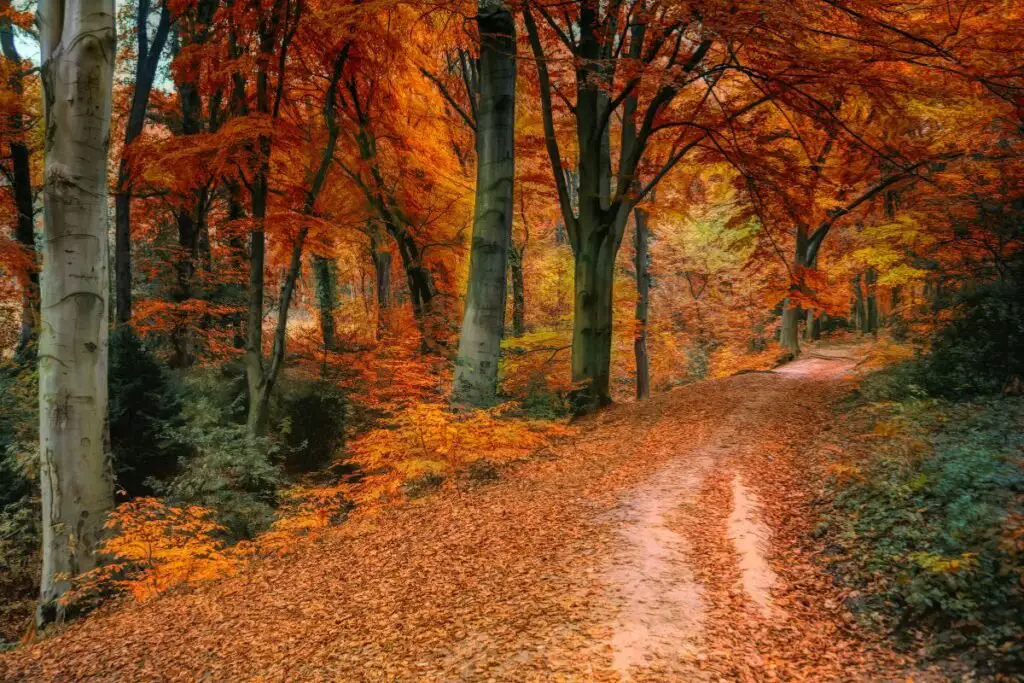
The sensitivity of maple trees to climatic conditions underscores their adaptability to environmental changes. They adjust their fall color display based on prevailing weather patterns, showcasing a remarkable ability to respond to variations in temperature and sunlight exposure.
Habitat Significance
The vibrant autumn colors of maple trees hold ecological significance within their habitat. These striking hues attract various seed-dispersing birds, facilitating the spread of seeds and promoting biodiversity. By drawing attention through their colorful foliage, maple trees ensure that their seeds are distributed over a wide area, aiding in successful reproduction.
Moreover, fall coloration plays a pivotal role in enhancing the survival and reproductive success of maple trees. The bright colors serve as signals for insects that aid in pollination, contributing to the tree's reproductive cycle. The pigments responsible for these hues provide protection against harmful UV radiation, safeguarding the tree's leaves during this crucial period.
Tourism Attraction
Fall Color Tours
Fall color tours are immensely popular, especially in regions known for their stunning maple trees. Travelers flock to witness the breathtaking transformation of green leaves into vibrant hues of red, orange, and gold. The picturesque landscapes captured in Getty Images showcase nature's beauty during the autumn season.
These tours not only offer a visual feast but also bring significant economic benefits to the local communities. Regions with dense maple tree populations experience a surge in tourism during the fall months. Small businesses thrive as visitors explore the forests adorned with colorful foliage, contributing to the local economy.
Celebrating fall colors through tours has deep cultural significance. It allows people to connect with nature's cyclical changes and appreciate the fleeting beauty of autumn. Families, friends, and nature enthusiasts come together to witness this annual spectacle, creating lasting memories amidst the golden canopies of maple trees.
Economic Impact
The economic impact of maple trees' fall colors on tourism is substantial. The vibrant foliage acts as a magnet for travelers seeking picturesque landscapes and outdoor experiences. Local businesses, from hotels to restaurants, benefit from the influx of tourists drawn by the allure of maple-rich regions.
The autumn season brings a surge in revenue for communities reliant on fall color tourism. Maple trees play a crucial role in attracting visitors looking to immerse themselves in nature's kaleidoscope of colors. As tourists explore hiking trails or embark on scenic drives, they contribute to the local economy by patronizing businesses along their journey.
Seasonal revenue generated by fall color tourism provides a vital boost to maple-rich regions. It sustains livelihoods, supports conservation efforts, and promotes sustainable tourism practices that preserve the natural beauty of these areas. The economic ripple effect extends beyond tourism, impacting various sectors within these communities.
Ecological Aspects
Maple Distribution
Maple trees are widely distributed across various regions globally, contributing significantly to the stunning autumn foliage. These trees are prevalent in North America, Europe, and Asia, enhancing the beauty of fall landscapes. The diverse species of maples ensure a rich tapestry of colors during the autumn season.
In regions renowned for their vibrant fall displays, such as New England in the United States and parts of Canada, maple trees dominate the forests. Their presence adds hues of red, orange, and yellow to the natural scenery, attracting tourists and nature enthusiasts alike. Even in Asia, countries like Japan boast extensive maple forests that draw visitors during the fall season.
The adaptability of maple trees allows them to thrive in various climates and terrains worldwide. From the sugar maples of North America to the Japanese maples in Asia, these trees exhibit remarkable resilience and diversity across continents. This global distribution underscores the ecological significance of maples in shaping autumn landscapes.
Ecology Overview
Maple trees' fall coloration serves a crucial ecological function beyond aesthetic appeal. The vibrant hues of red, orange, and yellow attract pollinators and seed dispersers essential for tree reproduction. By standing out amidst green foliage, maple trees increase their visibility to insects and birds seeking nectar or food sources.
During the fall season, maple leaves undergo chemical changes that produce pigments responsible for their striking colors. These pigments not only signal the onset of winter but also deter herbivores from feeding on the leaves. The bitter taste associated with these pigments acts as a natural defense mechanism against insects looking to consume tree foliage.
In addition to seed dispersal and herbivore interactions, maple trees' autumn colors contribute to nutrient cycling within ecosystems. As leaves fall and decompose on the forest floor, they enrich the soil with essential nutrients that support microbial activity and plant growth. This cycle of leaf litter decomposition sustains the health and biodiversity of forest ecosystems.
Health and Safety
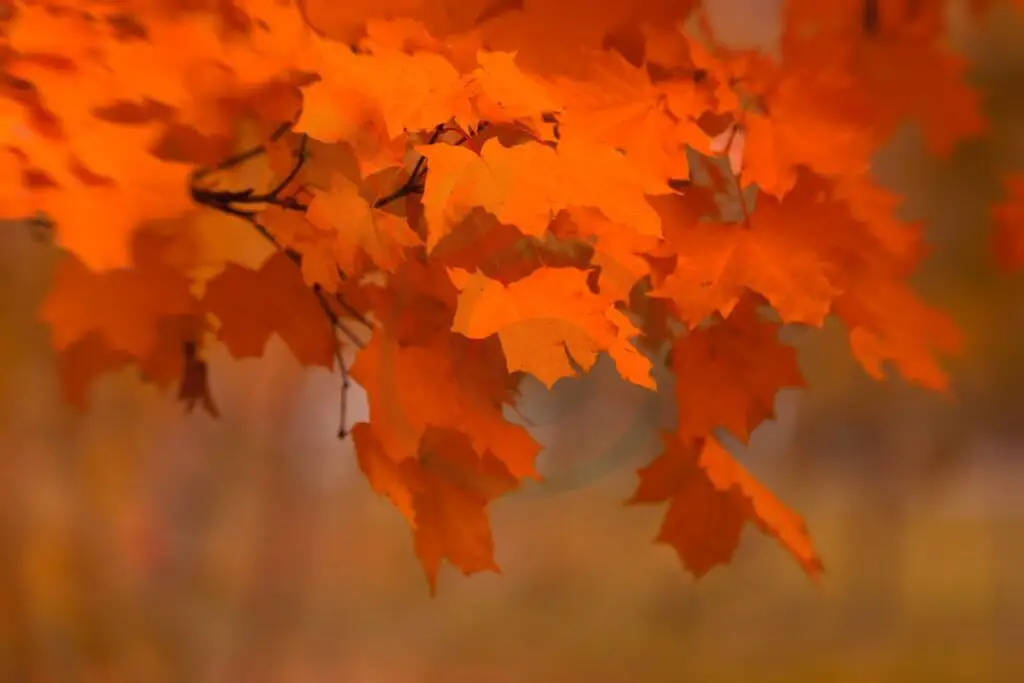
Allergenic Potential
Maple trees release pollen and sap during the fall season, posing an allergenic risk to many. These substances can trigger allergic reactions, especially in individuals susceptible to pollen allergies. It is crucial to be aware of maple tree allergies in autumn.
Toxicity Concerns
Certain species of maple trees may contain toxic compounds, raising concerns about potential toxicity. Specific parts of these trees, such as leaves or seeds, can harbor toxins. Identifying and avoiding toxic varieties of maple trees is essential for safety.
Beyond Colors
Maple Uses
Maple trees offer more than just stunning fall colors. They are valued for their versatile applications in various industries. The culinary world embraces maple syrup, a sweet and flavorful treat enjoyed worldwide. Medicinally, maple tree extracts are used for their potential health benefits. Commercially, maple wood is prized for its durability and aesthetic appeal.
The cultural and economic importance of maple trees extends beyond their vibrant hues. In the culinary realm, maple syrup is a staple ingredient in many dishes, adding a unique sweetness. Medicinally, maple products are utilized in supplements and herbal remedies for their purported healing properties. From furniture to flooring, maple wood is highly sought after in the commercial sector for its strength and beauty.
Cultural Significance
Maple trees hold deep cultural significance, especially during the autumn season when their colors transform landscapes. Artists often depict maple trees in paintings and literature as symbols of beauty and change. Festivals celebrating the arrival of fall colors showcase the emotional connection people have with these majestic trees.
In art and literature, maple trees symbolize resilience and transformation, mirroring the changing seasons of life. Festivals dedicated to maple trees bring communities together to honor nature's beauty and bounty. The emotional bond people share with maple trees during autumn evokes feelings of nostalgia and appreciation for nature's wonders.
Final Remarks
You've delved into the captivating world of maple trees and their stunning fall colors. Understanding the science behind these vibrant hues not only enriches your autumn experience but also highlights the intricate balance in nature. Consider how these colors impact ecosystems, tourism, and even your well-being. As you witness the leaves change, remember the environmental significance and marvel at the beauty around you.
Explore further into the realm of nature's wonders and deepen your appreciation for the seasonal transformations. Embrace the allure of fall colors, knowing that each leaf tells a story of science, ecology, and artistry. Step outside, breathe in the crisp air, and immerse yourself in the kaleidoscope of nature's palette.
Frequently Asked Questions
What are the primary pigments responsible for the vibrant fall colors of maple trees?
Chlorophyll, carotenoids, and anthocyanins are the main pigments in maple leaves. Chlorophyll gives leaves their green color in spring and summer, while carotenoids produce yellow and orange hues. Anthocyanins create red and purple tones during autumn.
How do environmental factors influence the color change in maple trees during fall?
Factors like temperature, sunlight, and soil moisture levels play a significant role in determining the intensity and duration of fall colors in maple trees. Cooler temperatures and sunny days promote vivid colors, while drought can lead to early leaf drop.
Why is the fall foliage of maple trees a popular tourism attraction?
The stunning display of vibrant reds, oranges, and yellows on maple trees during fall attracts tourists seeking picturesque landscapes and outdoor experiences. Many regions with abundant maple trees capitalize on this natural phenomenon to boost tourism through activities like leaf-peeping tours.
In what ways do maple trees contribute to ecological balance beyond their colorful foliage?
Maple trees provide essential habitats for various wildlife species, support biodiversity by offering food sources, and help maintain soil health through their root systems. They contribute to carbon sequestration and overall ecosystem resilience.
How can individuals ensure health and safety when enjoying fall foliage viewing near maple trees?
When engaging in outdoor activities near maple trees in autumn, it's crucial to watch out for slippery leaves on pathways. Be cautious of uneven terrain or obstacles hidden under fallen leaves to prevent tripping or slipping accidents. Wear appropriate footwear for better traction.
Image Source: Paid image from CANVA

